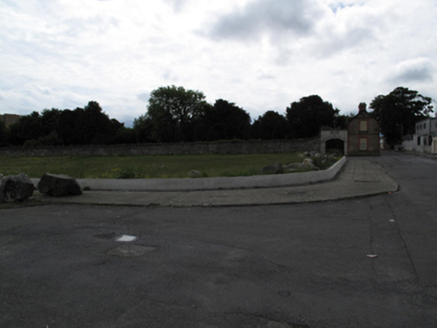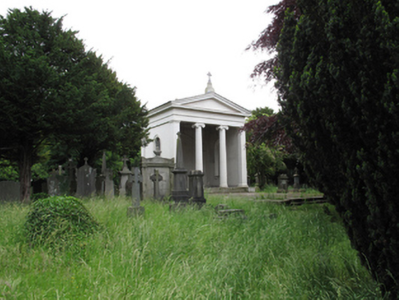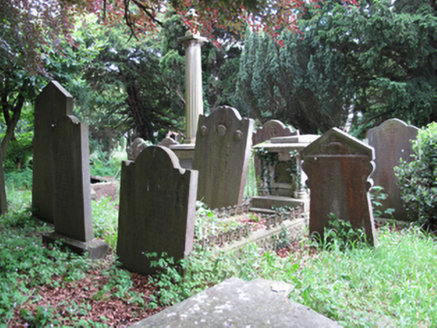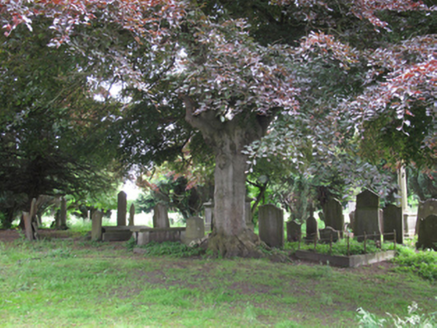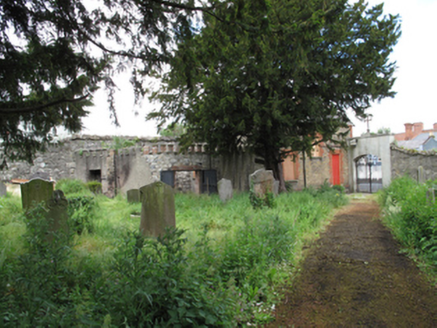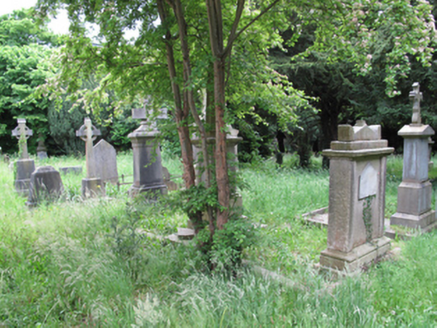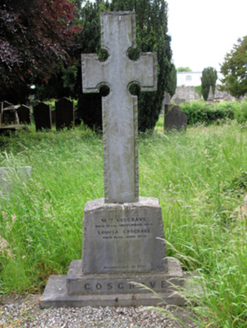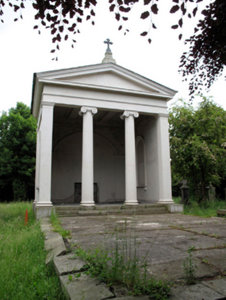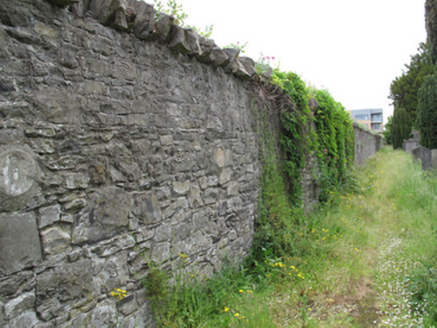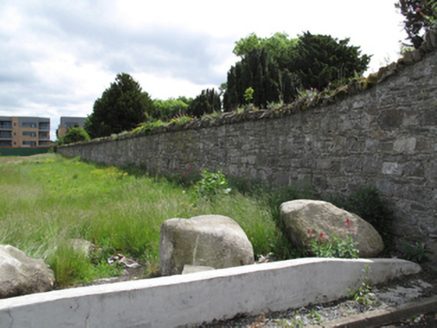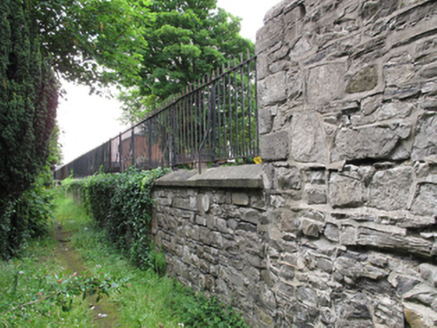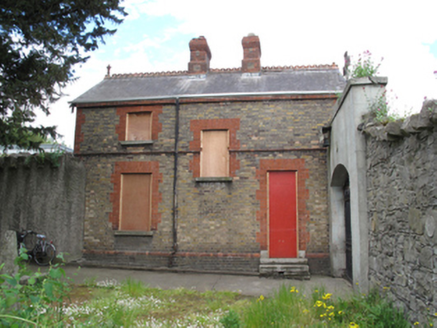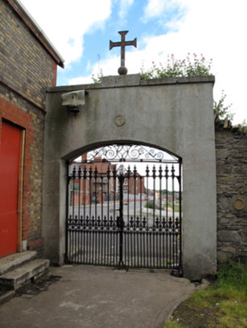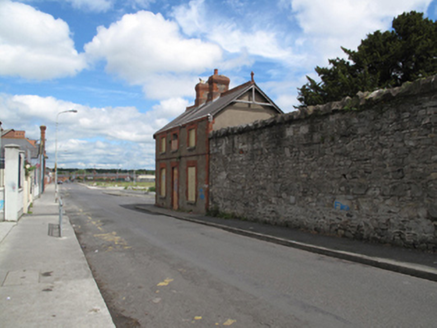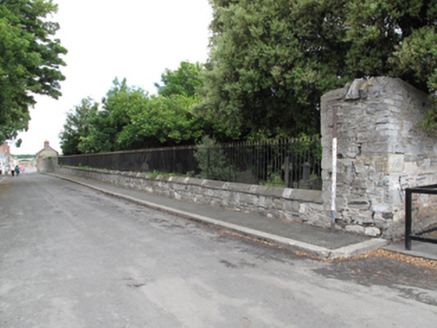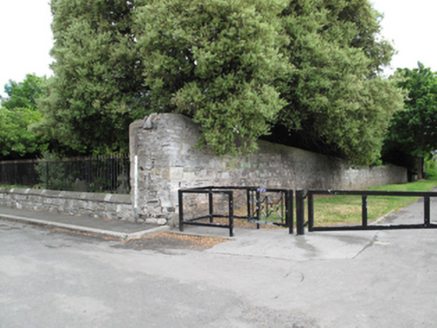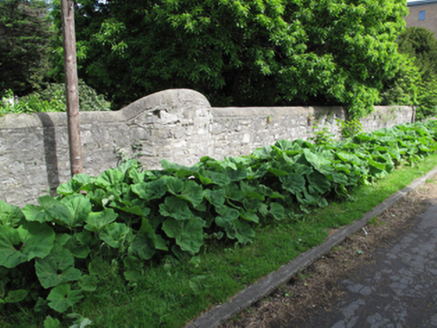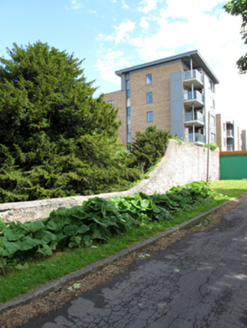Survey Data
Reg No
50080098
Rating
Regional
Categories of Special Interest
Architectural, Artistic, Historical, Social
Original Use
Graveyard/cemetery
In Use As
Graveyard/cemetery
Date
1825 - 1830
Coordinates
312150, 233069
Date Recorded
12/06/2013
Date Updated
--/--/--
Description
Enclosed Roman Catholic cemetery established 1829, with upright and recumbent grave markers of varying materials and designs, dating from 1829 to the beginning of the twenty-first century. Mortuary chapel to centre, on raised podium within mature landscaping. Sexton's house to north-east boundary having small yard to south. Calp limestone boundary walls with medallion motif, having rubble stone parapet to north boundary and north section of west boundary, wrought-iron railings over calp limestone plinth wall to south section of west boundary. Rendered entrance portal to north-east corner having rendered capping with cross finial, plaque with lettering 'D.O.M', segmental-headed opening having block-and-start cut granite surround and double-leaf wrought-iron entrance gates, giving access from Saint Vincent Street West. Located along the Grand Canal, Saint Vincent Street West and former Bulfin Street.
Appraisal
Established in 1829, following the passing of the 'Act of Easement of Burial Bills' in 1824, this was the first Roman Catholic cemetery to be opened following Catholic Emancipation in 1829, pre-dating Prospect Cemetery in Glasnevin by three years. The high boundary walls, rich landscaping and delineated paths are typical of a nineteenth-century garden cemetery, as opposed to a churchyard. The variety of designs found in the grave markers is significant in terms of artistic value. The site is further enhanced by the mortuary chapel, the sexton's house, the stone boundary walls and gates, and the mature trees and shrubs. W. T. Cosgrave, former president of the Irish Free State, was buried in Goldenbridge Cemetery in 1965. The cemetery remains a significant part of the social fabric of the area.
